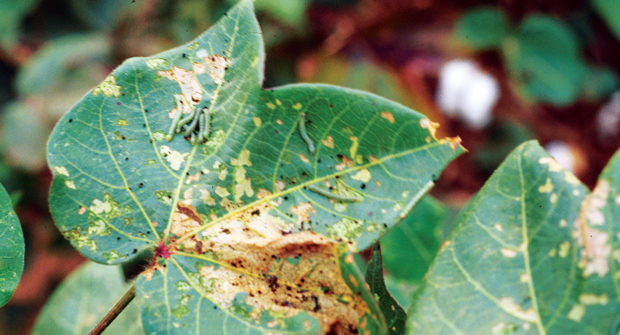As the 2020s reach their midpoint, lawn care operators continue to face new challenges, from newly emergent pests to changing weather patterns that affect not only the types of turf but the pests that target them.
Richard Pearl, director of lawn care at Drew’s Lawn and Landscape in Nashville, and Jay Wyrick, agronomist at FineTurf in Matthews, N.C., share what challenges they faced in 2024 and what that might spell for 2025.
Climate changes
According to Pearl, the most significant issue facing his clients in Tennessee is the shift in climate.
“People who have lived here their whole life have always had cool-season turf,” he says. “So with the climate changes, a lot of warm-season turf has been introduced to our region, like bermudagrass, and many homeowners here do not like that at all.”
Data from the National Weather Service (NWS) backs up what Pearl has seen with his own two eyes. Since 2000, the average annual temperature in Nashville has risen steadily from 59.7 degrees to 63.7 degrees in 2024. That includes a jump from an average temperature of 56.7 in 2000 to 63.6 degrees in April 2024.
“We’re really challenged with taking care of a lot of fescue while also facing more than 60 to 70 days of 100-degree heat,” he says. “Climate has been the biggest factor for the overall health of the turf. That goes as far as irrigation, too, as it’s had a hard time keeping up with the issues we’re facing.”
For Wyrick, based in the suburbs of Charlotte, it’s been a similar story.
“We’re running around 20 degrees at night right now (mid-December), which is about six to eight degrees lower than normal, and it looks like we’re going to hang in there for the next two or three weeks,” says Wyrick.
NWS data again shows an almost five-degree jump in the average yearly temperature in the Charlotte area since 2000. Wyrick adds that the weather has changed the way he plans his year, with the seasons shifting considerably.
“The biggest trend we’ve seen has been our calendar year shifting almost a month,” he says. “We’re later into the fall before we cool off, where it used to start in September, but now it’s early October, almost November.
“We’re about a month later in the spring. We used to see warm-season turf, like bermudagrass, green up 50 to 60 percent by mid-April. But now we’re waiting into mid-May into almost the first part of June before the soil becomes consistently warm enough for it to come out.”
Emerging pests
Alongside warmer temperatures have come expanded windows for pests to thrive, including fall armyworms.
Fall armyworms aren’t unusual for lawn care operators (LCOs) in the southern half of the U.S. But what might be unusual for LCOs over the coming years will be knowing the severity they’ll face from year to year.
“I can’t say whether there’s been any weather pattern change that would make ‘em more likely this coming year or anything like that,” says Blake Layton, Ph.D., Extension entomology specialist at Mississippi State University. “But to me, they’re sporadic pests that you need to be ready for every year.”
With climate conditions continuing to become more and more unpredictable, so will pests like fall armyworms, making an LCO’s job more complicated.
“(Armyworms) will take out an entire lawn overnight,” Pearl says. “So, we’re really having to find ways to be proactive (in case of an outbreak), but also out how we can prevent a worm taking out an entire property overnight.”


